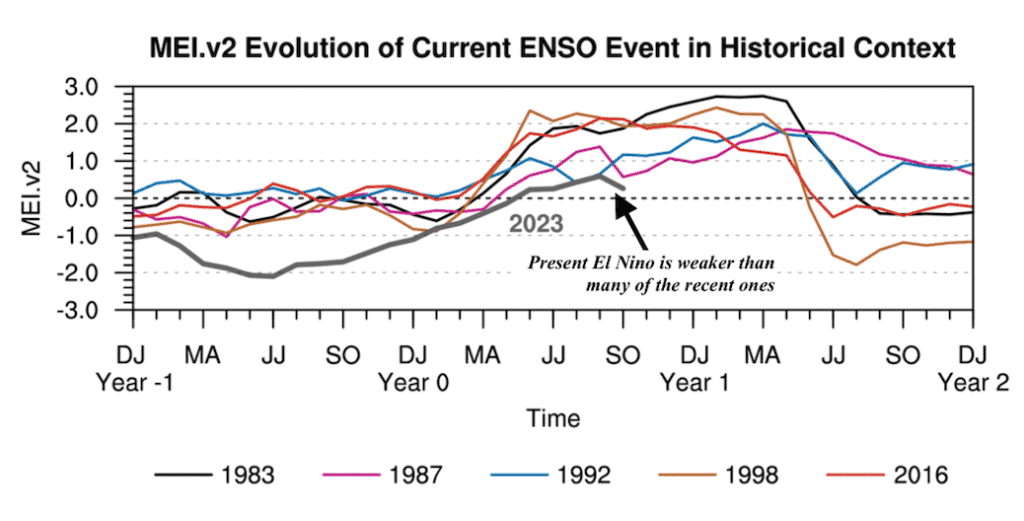
In this video (click above), I discuss the MJO index and how we use it as a weather forecasting tool in conjunction with El Niño:
- Where the MJO will move to, and if it will influence the outcome of northern Brazil’s soybean drought;
- the potential for a colder outlook in U.S. natural gas heating demand areas; and
- a continuation of disease issues for West African cocoa.
While Equatorial Pacific Ocean temperatures are very warm suggesting strong El Niño conditions, other variables do not justify El Niño being more than weak-to-moderate.
For example, the MEI index (above) is a better representation of how strong El Niño is. This takes into account global atmospheric angular momentum GLAAM), and the SOI index and is also influenced by the progression and strength of the MJO.
Feel free to download a complimentary issue of one of my full WeatherWealth reports with recent trade ideas here and how we forecast longer-range weather for farmers and traders on six continents.
- Please check it out here: https://www.bestweatherinc.com/new-membership-options/



